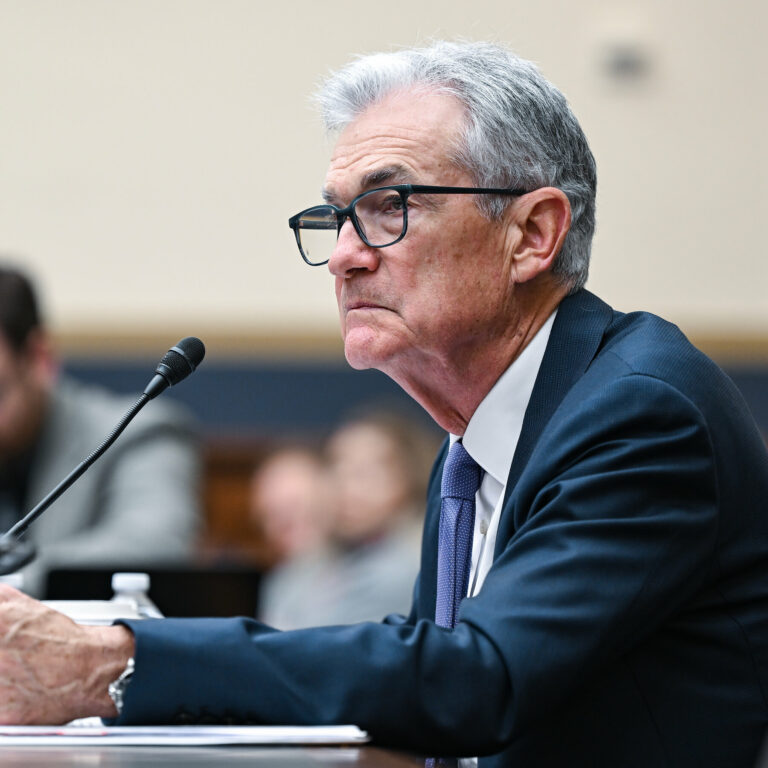:max_bytes(150000):strip_icc():format(jpeg)/JeromePowell-bcb89dfc68cc46d6973bbbdbfacaa6cb.jpg)
Yuki Iwamura / Bloomberg / Getty Images
Federal Reserve Chair Jerome Powell speaks during the New York Times DealBook Summit, on Dec. 4, 2024.
Key Takeaways
- Financial markets widely expect Fed officials to boost the economy with a rate cut in December, despite indications that inflation has stayed stubborn, and the job market resilient in recent months.
- Hurricanes in late September and October complicated the job of policymakers trying to understand the trajectory of the job market.
- Despite a bounce-back in job creation in November, the average rate of job growth has slowed down this fall, suggesting that the Fed might be inclined to help out businesses by reducing borrowing costs.
- One economists suggested Fed officials are likely to cut rates simply because financial markets are betting they will.
Inflation stayed stubborn, and the job market bounced back in recent reports—but it was not enough to derail market expectations that the Federal Reserve would cut its influential interest rate in December.
Financial market participants widely expect officials at the Fed to cut the central bank’s benchmark fed funds rate by 0.25 percentage points at the central bank policy committee’s next meeting. Markets were pricing in an 85% chance of a cut Friday afternoon, according to the CME Group’s FedWatch tool, which forecasts rate movements based on fed funds futures trading data. It would be the third rate cut in as many meetings.
Fed officials are attempting to cut interest rates enough to boost the economy and prevent a surge of unemployment, but not so fast that they reignite the high inflation that roiled the economy in 2022. The fed funds rate influences interest rates on all kinds of loans, including mortgages and credit cards, so cutting it makes the economy run “hotter” by encouraging more borrowing and spending.
The Fed is expected to proceed with a rate cut that policymakers have telegraphed is coming for months. Earlier this week, Fed governor Christopher Waller said he was inclined to support a rate cut. However, he said he was keeping an eye on recent data on inflation, which is still above the Fed’s goal of a 2% annual rate and has not made much progress in the right direction lately.
Then, on Friday, a report on the job market showed the economy was still adding jobs, bouncing back from storm-related disruptions, and diminishing the risk of high unemployment that rate cuts are supposed to prevent. The Fed sets the nation’s monetary policy with a “dual mandate” of fighting inflation and preserving the job market, goals that sometimes conflict.
A Self-Fulfilling Prophecy?
Economists offered various explanations for why the Fed seemed likely to cut rates despite the trajectory of the recent economic data.
One possibility: Fed officials could take their cues from financial markets and want to avoid surprises. That’s the theory put forward by economists Conrad DeQuadros and Jon Ryding at Brean Capital Markets.
“The Fed seems disinclined to disappoint market expectations, so the act of pricing the outcome of the next Fed meeting actually determines the result of the monetary policy decision,” they wrote in a commentary. “If futures markets on the day of the next Fed meeting were pricing a 10% probability of a rate cut, we would guess that Fed would skip at the December meeting, but if markets are pricing a 90% probability—as they are now—we think the Fed would cut rates.”
Another possibility is that the job market is truly slowing down, if not collapsing, so there’s still pressure on the Fed to step in and rescue it. In the first half of the year, 207,000 jobs were added on average each month. However, since July, the average number of jobs added each month is 148,000. Even excluding the hurricane-related dip in October, that’s a downshift from the year’s first half.
“November’s labor market data give the FOMC the green light to ease policy again this month,” Samuel Tombs, chief economist at Pantheon Macroeconomics, wrote in a commentary.
